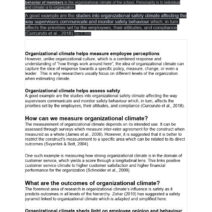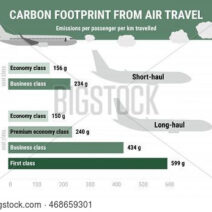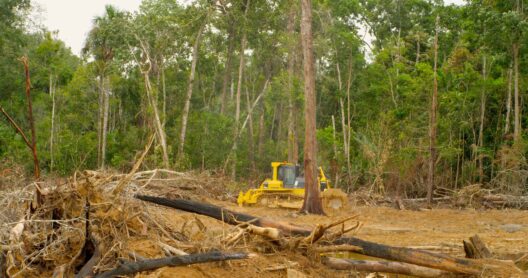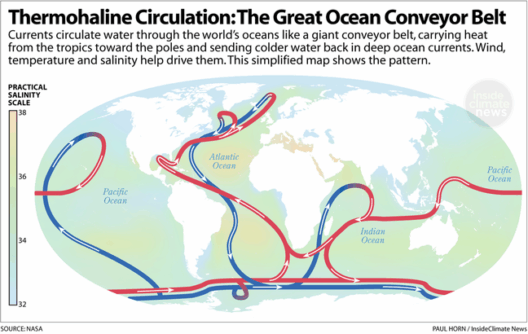Pollution’s Price: The Direct Link Between Contaminants and Global Warming
The interplay between pollution and climate change reveals a complex tapestry of environmental challenges. Have you ever pondered how many contaminants emerge as an unintended consequence of our quest for economic progress? This enigmatic relationship extends beyond mere curiosity; it raises significant implications for our planet’s future. Our very existence is tethered to ecosystems that are disturbingly resilient yet inherently fragile.
As the Earth’s temperature rises, we observe not only the increase in greenhouse gases but also a burgeoning array of pollutants. These contaminants, which include heavy metals, microplastics, and volatile organic compounds, harm biodiversity and human health. They arise from industrial activities, agricultural practices, and urbanization. Each release resonates with the urgency of climate change, forming an intricate web that impacts atmospheric conditions and ultimately exacerbates global warming.
Pollution is not just a byproduct of progress; it is a symptom of a deeper malaise in our approach to environmental stewardship. The question posed to society is this: Can we change our trajectory before the consequences become irreversible? The essence of this challenge lies in understanding the symbiotic relationship between pollutants and climate variability, a task of pressing urgency.
To comprehend the nexus between contaminants and global warming, one must first recognize the nature of pollutants. Heavy metals such as lead and mercury are prime examples. These elements, once released into the environment, do not biodegrade. They accumulate in soils and waterways, entering food chains and threatening wildlife and human populations alike. What is the cost of inaction? An increase in neurodevelopmental disorders in children and a decline in ecosystem health, leading to reduced agricultural yields.
Moreover, organic contaminants, specifically those derived from agricultural runoff, serve as a poignant illustration of this phenomenon. Pesticides and fertilizers designed to maximize crop yields inadvertently contribute to air and water pollution. Their presence, exacerbated by fluctuating weather patterns and rising temperatures, can create toxic conditions for aquatic life. Algal blooms, driven by nutrient overload, release harmful toxins into our water supply and disrupt entire ecosystems. This vicious cycle not only threatens biodiversity but also episodically fuels climate change through the release of additional greenhouse gases.
Microplastics, another insidious contaminant, have permeated every corner of the globe. These minute particles originate from various sources, including the degradation of larger plastic items and synthetic fibers released during washing. As they accumulate in bodies of water, they contribute to the degradation of marine ecosystems and adversely affect marine species. When fish ingest microplastics, and those fish are consumed by humans, the consequence is a direct link to human health concerns such as hormonal disruptions and increased cancer risks. Herein lies another facet of pollution’s price—our health must pay the toll for environmental negligence.
Understanding the implications of these pollutants necessitates a broader examination of the societal factors driving pollution and climate change. Industrial growth has often favored short-term economic benefits over long-term sustainability. This raises a critical query: How can we reshape our economic frameworks to prioritize ecological integrity? The answer lies in adopting a holistic approach to governance that integrates environmental health with economic policy. By prioritizing sustainable practices, we can forge a pathway to reduce pollution and mitigate the impact of climate change.
Transitioning to renewable energy sources is a pivotal measure in this journey. Solar, wind, and hydroelectric power present viable alternatives to fossil fuels, which constitute a major source of both greenhouse gases and environmental contaminants. Additionally, energy efficiency innovations can drastically reduce energy consumption. This collective shift toward clean energy can diminish emissions of toxic pollutants while simultaneously addressing the specter of climate change.
Moreover, implementing stringent regulations and encouraging corporate responsibility can significantly mitigate pollution. Companies can be incentivized to adopt cleaner production techniques, thereby lessening their environmental footprint. This transformation, however, requires collaboration between governments, industries, and civil society. The complicity in pollution is a shared burden; hence, the solution must also be collectively embraced.
Furthermore, community-driven initiatives can play a critical role in addressing pollution at local levels. Grassroots movements can mobilize citizens to advocate for cleaner environments and sustainable practices. Education is instrumental in shifting public perceptions about pollution’s link to climate change. The more individuals understand these connections, the more likely they are to engage in meaningful environmental activism.
Effective waste management and recycling programs also contribute significantly to reducing pollution. By diverting waste from landfills and incineration, communities can reduce the release of harmful chemicals and greenhouse gases. Sustainable material usage and circular economy practices offer a fertile ground for innovation, allowing society to redefine waste not as a burden but as a resource.
The challenge ahead is daunting yet not insurmountable. The direct link between contaminants and global warming elucidates the intricate nature of environmental issues. By adopting a multifaceted approach, we can tackle the root causes of pollution while working towards sustainability. Each positive action, small or grand, serves to fortify our resilience against climate change.
As we forge ahead, the questions of responsibility, sustainability, and community engagement remain paramount. Will we heed the call to action? Are we prepared to pay the price of pollution not just in economic metrics, but in health, biodiversity, and planetary viability? The stakes have never been higher, and the time for decisive action is now. Our legacy will be dictated by the choices we make today—choices that hold the power to reshape our environment for generations to come.








